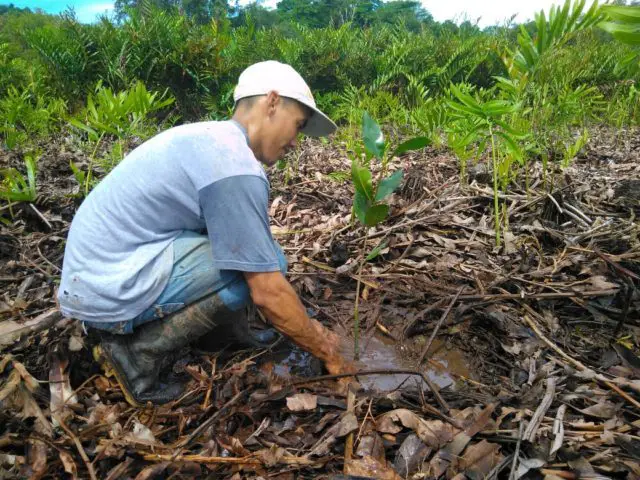The National System of Conservation Areas (Sinac-Minae), through the Osa Conservation Area (Acosa), implements 2 projects for the restoration of the Térraba Sierpe National Wetland (HNTS).
This is due to the pressures that their ecosystems suffer from pollution, the dragging of agrochemicals and pesticides, changes in land use and the spread of the invasive species “Negraforra” (Acrostichum aureum), a native fern from the area that has aggressively colonized some areas and acts as a barrier to the natural establishment of the mangrove.

The project called “Program of Restoration, Conservation and Sustainable Management of the Mangroves of Costa Rica and Benin against Climate Change”, also called “Mangrove Project Costa-Rica Benin”, seeks to improve the mitigation and adaptation to climate change of coastal wetlands in 3 sites in Costa Rica.
They are the Estero Puntarenas Wetland, Cuajiniquil and Térraba-Sierpe National Wetland (HNTS), as well as 2 sites in Benin, Africa, Ouidah, and Gran Popo.
This international cooperation project will initiate piloting for rehabilitation, through the implementation of a protocol that includes the development of prescribed burnings, under the supervision of the National Fire Management Program of the SINAC, continuously monitoring atmospheric climate conditions, using reports from the National Meteorological Institute, to attend to any eventuality, maintaining the surveillance of the site during the day and night. The intervened area will cover 6 hectares.
The institutional coordination of the project is in charge of the National System of Conservation Areas (Sinac), through the National Wetlands Program who accompanies the Neotrópica Foundation in the technical execution, with the technical and scientific support and the experience of the Institute of Ecology, Fishery and Oceanography of the Gulf of Mexico (Epomex), and the Autonomous University of Campeche (UAC), institution that proposes the restoration protocol that will be applied in the pilot areas.
Haydeé Rodríguez, Deputy Minister of Water and Mares said that “it is relevant to mention that the proposed restoration is considered as “active restoration”. Therefore, it requires the actions of man through ecology and engineering techniques, to return the structure and function of the ecosystem as close as possible to a previous scenario”.
For her part, Dr. Claudia Agraz, an expert from Epomex,
The 1st stage of the process, consisted in the development of a diagnosis, whose results show climatic, hydrological information, characteristics of the environment, and the mangrove ecosystem that allow identifying the ideal restoration plan for each of the sites, which constitutes the 2nd stage of the aforementioned project.
Given the extension of the Negraforra species (Acrostrichum aureum), the technicians and scientists who lead the Mangroves Costa Rica – Benin project propose, as part of the restoration plan, the following activities:
- Prescribed burning on a 6-hectare plot, currently covered by this species and with a permanent flow of tides, in search of its elimination.
- Be able to continue with the restoration process
- Then proceed with the planting of new mangrove plants

